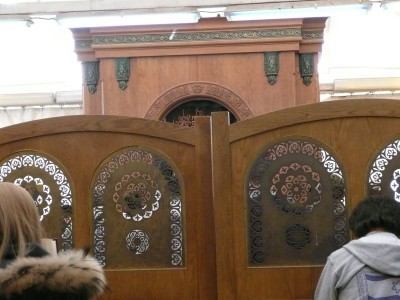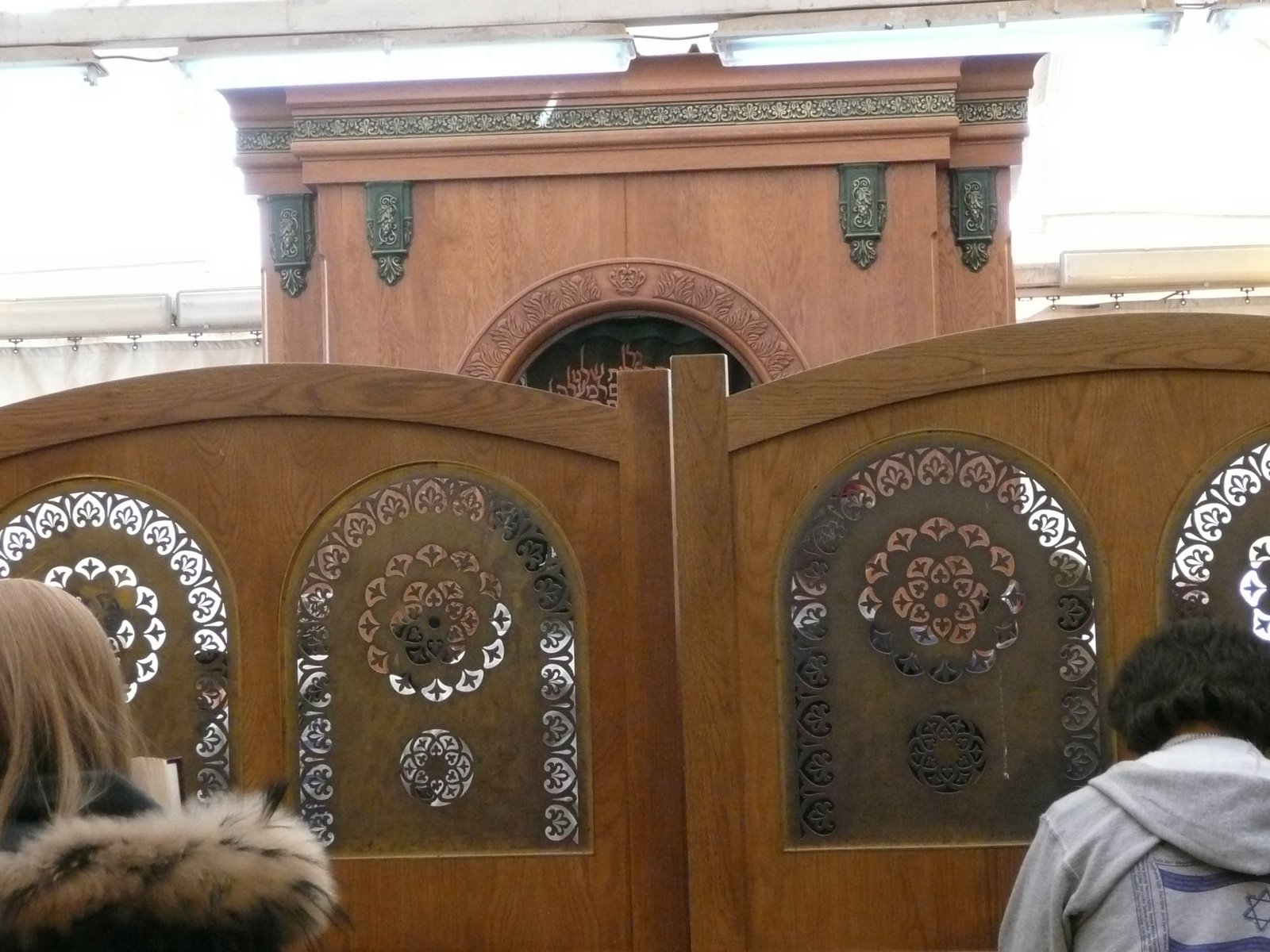
The layout of a room is its first impression. It sets the tone for what goes on there, what the proper decorum is—the general mood. Classrooms are good examples of this—a room with a circle of chairs invites a group conversation; a table and desks sets us up for a lecture.
When we build our synagogues, we take these types of questions into careful consideration. What decorations would make the space feel holy? What kinds of doorways can keep some spaces quiet while making the whole building still feel open and communal? Are there clocks? Are there prayers displayed on the walls? Which ones? We put a lot of thought into the details of these rooms, as they are so central to our communities – yet we tend to forget to consider the obvious. What does a room with a wall built down the middle actually express?
If Orthodox Jews put our preconceived notions about mechitzas as necessary and natural parts of our shul experiences aside, we might find that this particular piece of infrastructure is perhaps not as natural as we have come to feel. A wall in the middle of a room is not communal; we don’t build dividers in our living rooms or down or our Shabbat tables. We don’t have the side of the Shabbat table that eats the meal, and the side that watches. Placing a hierarchical structure in a communal environment would be considered unhealthy and disruptive—so why are we comfortable building one in our community prayer space?
Of course, we who were brought up with mechitzas can imagine the ramifications of praying without one, or even building sanctified prayer spaces without one. We remind ourselves: it’s not natural; it will lead us astray. It’s good to separate between genders; it’s less distracting. Mechitzas are one of the main issues that separate Orthodox shuls from other denominations’—and even in a pluralistic mindset, people like to be able to differentiate themselves. We’re comfortable with the mechitza and it makes us who we are—these were my first thoughts when approaching this topic, and I’m sure they are shared. However, do we stop to think about the possible effects of not having one in the first place?
My first summer working in day camp, on a Friday afternoon, one of my campers decided to confide in me his deepest secret: “I’m not really Orthodox.” I looked into this eleven year old boy’s genuine, hopeful eyes, wondering what being Orthodox means to him, and replied, “That’s quite alright, we’re all different here.” (As different as a camp full of ‘Orthodox’ Jews gets, that is.) Feeling like he found a safe space, he started to tell me more about this, and what Judaism meant to him. “I like my Orthodox friends,” he told me. “I go with them to their shuls and we play outside on Shabbat afternoons, and it’s different than my house but it’s fun!” He paused. “But I can’t imagine going with my family.” “What do you mean?” I asked him. He’s from a fairly typical family, one mom, one dad, two brothers. “I can’t imagine going to shul and leaving my mom by herself on the other side. Shul is a family place.”
Shul is a family place. That is the lesson learned from this eleven-year-old boy who hadn’t seen a mechitza until that summer. Shul is a family place. That is the result we get from taking away this wall.
Let’s get to the core of this dividing line, however, and what it is that we’re dividing. We’re dividing by gender – man and woman. In a heterosexual, binary world, where men are attracted to women, and women are attracted to men, and gender identity is simple and not much of a conversation, there is a space for men at shul and a space for women, and they separate but equal—with limitations on the latter.
Yet look around—is that the world we’re living in now? With states in America legalizing gay marriage and Facebook giving over thirty gender identity choices on one’s profile it would be untenable to argue that that reality, as described above, is our reality.
The main issue to take with the mechitza is the division of groups based on anachronistic options. It forces people to simplify their self-identity to “man” or “woman,” and then broadcast that choice to the rest of the community. That seems to be an unjust process to put people through, people who are looking for a community and prayer space. We feel like Orthodoxy needs it—a place mark of our commitment to tradition—but perhaps it is not as necessary as we think. Perhaps what we gain from open seating is much greater than what we lose from keeping the mechitza around.
The mechitza is also a statement, albeit secondary, to the inclusion of everyone in services. While it does not dictate how they run, it is a structural reinforcement of male-led services. Not only are you sending your mom, as my camper’s story told, to sit on the other side—more often than not, you’re sending her to watch. In a male-centric service, the wall often acts as another aid to division—not only can the women not participate, but the women are blocked off like an audience section; in a service with leadership roles for everyone, the mechitza says to many, “Hey, just remember who you really are here.”
It seems to me that the mechitza is no longer dividing between two genders—it’s dividing between two worlds. The world of the past where we are taught that our gender is binary and the world where our gender is fluid; the world where Judaism is supposed to be emotionally and aesthetically traditional, and the world where it’s changing every minute; the world where a mechitza is a symbol of familiarity, and the world where a mechitza is a symbol of heteronormativity and power corruption.
Most of life is finding a balance between these two sides, knowing how to live in the middle, to validate and understand both extremes and bring each other into a comfortable medium. As Rambam taught, the golden path is the middle path.
Yet, mediating is a difficult task to fulfill over a wall. It’s time to look at both sides, to really look at them, and evaluate what our priorities are today. Where do our sociological values lie, and what boundaries are we actually willing to push to adhere to them? After all, for some, the mechitza can mean the difference of an uncomfortable building and a family place.
Eden Farber is living on Kibbutz Ein HaNatziv after completing high school in Atlanta last year.

